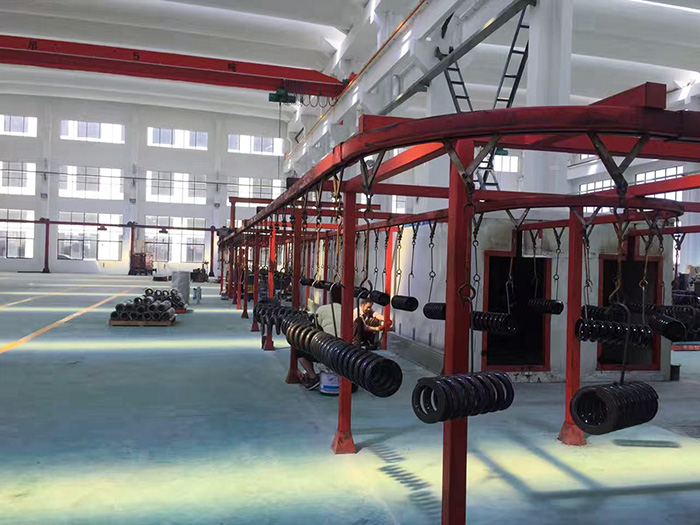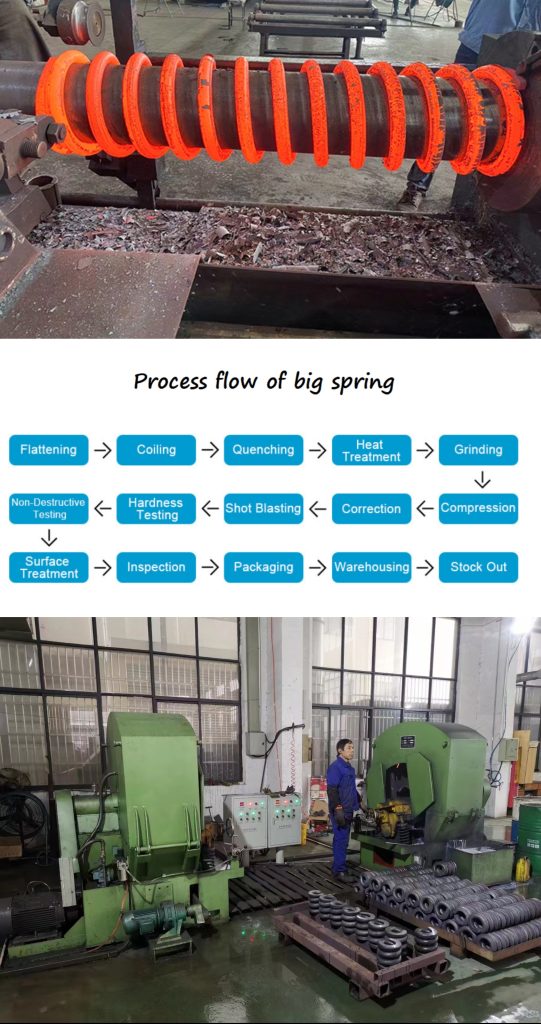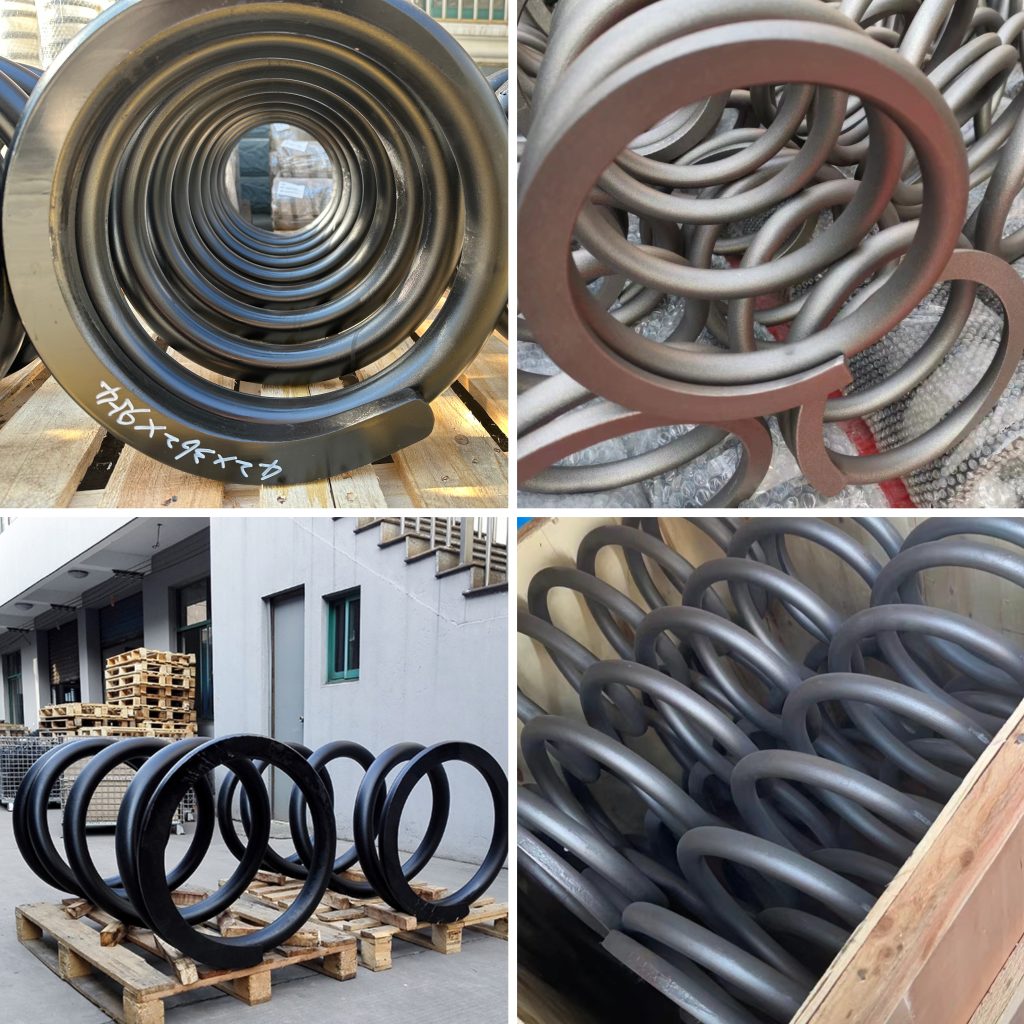High-Temperature Coiled Heavy-duty Spring‘s Material, Processing, Application, and Maintenance Details
Springs are critical components within machinery. And among them, “Hot Coiled Large Spring” stand out due to their exceptional performance and diverse applications. Let’s delve deeper into this notable product.

Material Selection
In the production of “Hot Coiled Large Springs,” commonly used materials include 60Si2Mn and 60Si2MnA. 60Si2Mn, with high carbon content, is suitable for high-strength and hardness requirements. 60Si2MnA, containing trace amounts of aluminum, balances strength and ductility more effectively.
Processing Technique

The manufacturing process of “Hot Coiled Large Springs” involves hot coiling, heat treatment, and shaping. Advanced hot coiling ensures material flexibility and strength under high-temperature conditions. Subsequent heat treatment further enhances the material’s elasticity and durability for stability under high pressure and frequency.
Hot Coiling:
Hot coiling is the initial stage in manufacturing “Hot Coiled Large Springs.” In this process, raw materials (such as 60Si2Mn or 60Si2MnA) are heated and coiled to render them malleable at high temperatures. This high-temperature treatment aids in plastic deformation, making the raw material more amenable for subsequent shaping processes.
Heat Treatment:
Heat treatment stands as a pivotal phase in the production of “Hot Coiled Large Springs.” This step involves placing the springs, which have undergone hot coiling, into a furnace at specific temperatures for a set duration, followed by controlled cooling. Heat treatment aims to modify the material’s crystalline structure, enhancing its strength and resilience. This process also helps in relieving internal stresses, ensuring stability and durability during operation.
Shaping:
Shaping continues after hot coiling, involving the transformation of materials subjected to heat treatment into the final form of the spring through cutting, bending, and coiling. Precise shaping ensures that the spring’s dimensions and shape adhere to design specifications, maintaining the material’s structural integrity and performance characteristics.
Application Scenarios
These springs find extensive use in automotive, machinery, railway transportation, and industrial production lines. Their excellent fatigue resistance and elasticity make them integral for heavy machinery in damping, transmission, and support functions.

Maintenance Guidelines

Regular Inspection and Testing: Periodic checks on surface conditions and elasticity, utilizing tension testing tools, ensure performance adherence.
Corrosion Protection and Lubrication: For materials like 60Si2MnA prone to corrosion, anti-corrosion measures and suitable lubrication extend their lifespan.
Avoiding Overloading: Prolonged overloading damages the springs. Preventing this occurrence is crucial.
Proper Storage: Avoid exposure to moisture, heat, or direct strong light to prolong the spring’s life span.
Understanding the material, processing, application, and maintenance specifics of “Hot Coiled Large Springs” is pivotal for efficient utilization and maintenance of this vital component within mechanical systems.

aPvsNJBDcnXNxYHmAvAnAXybQwSx
https://www.yuu-spring.com